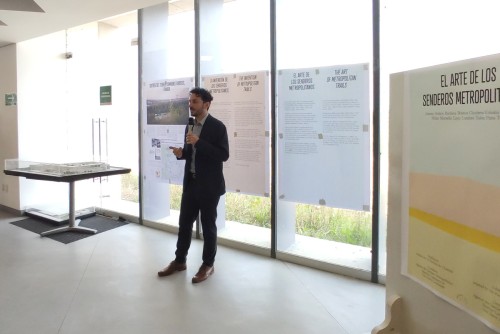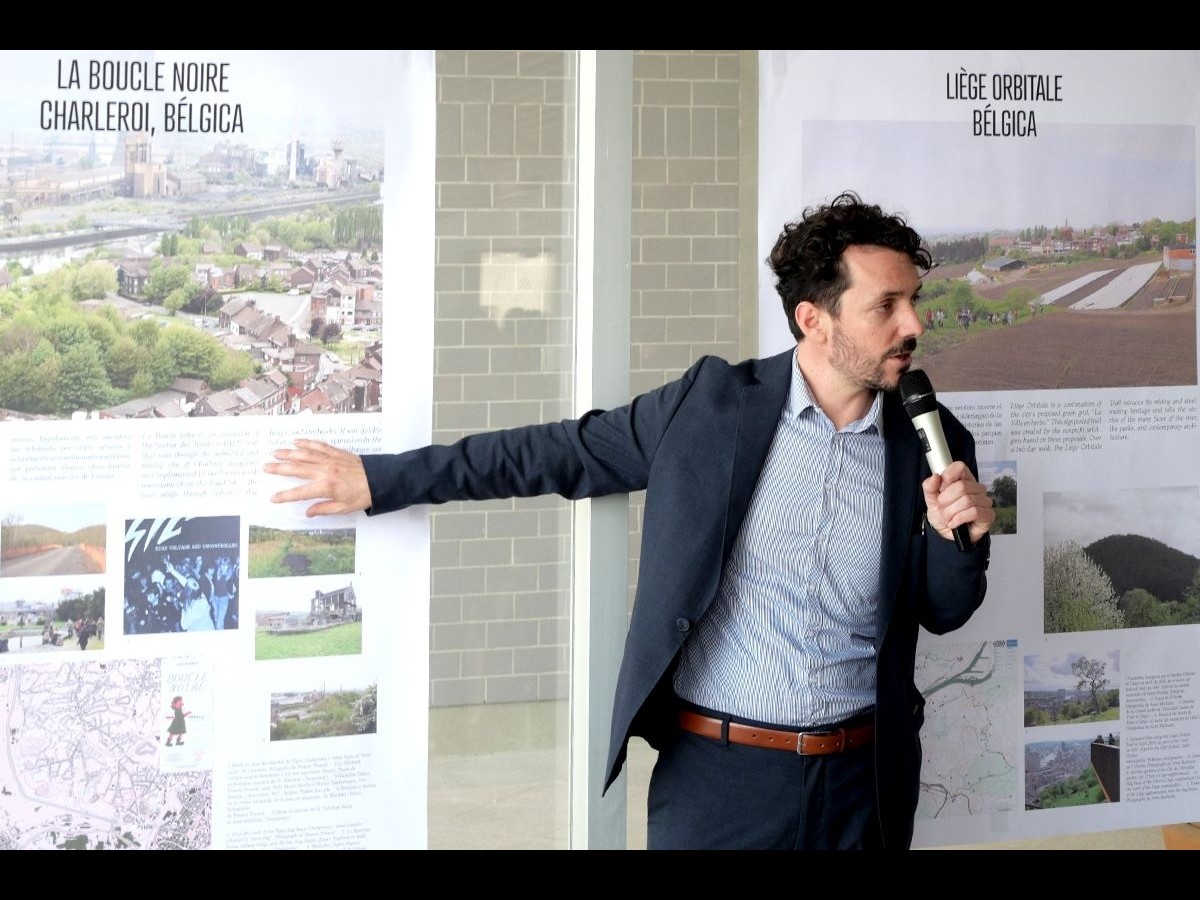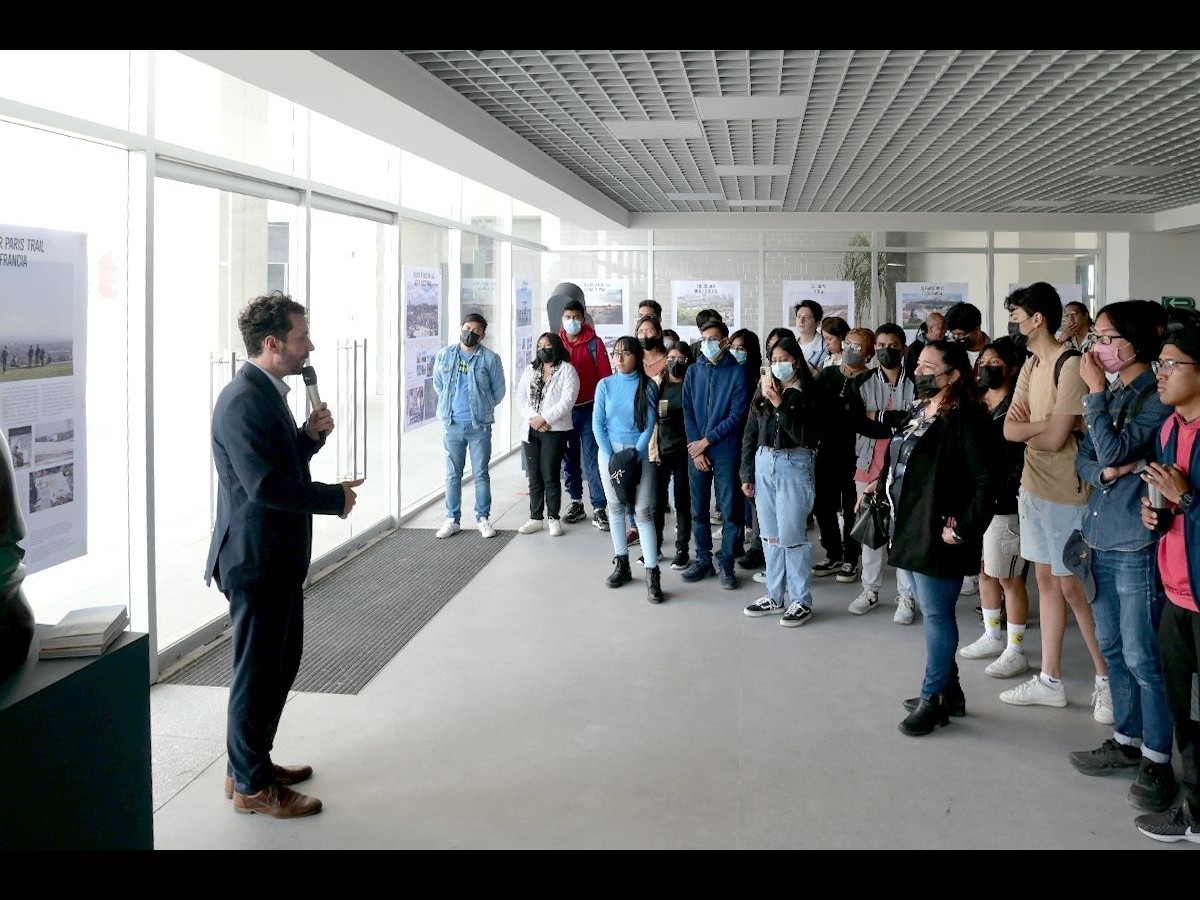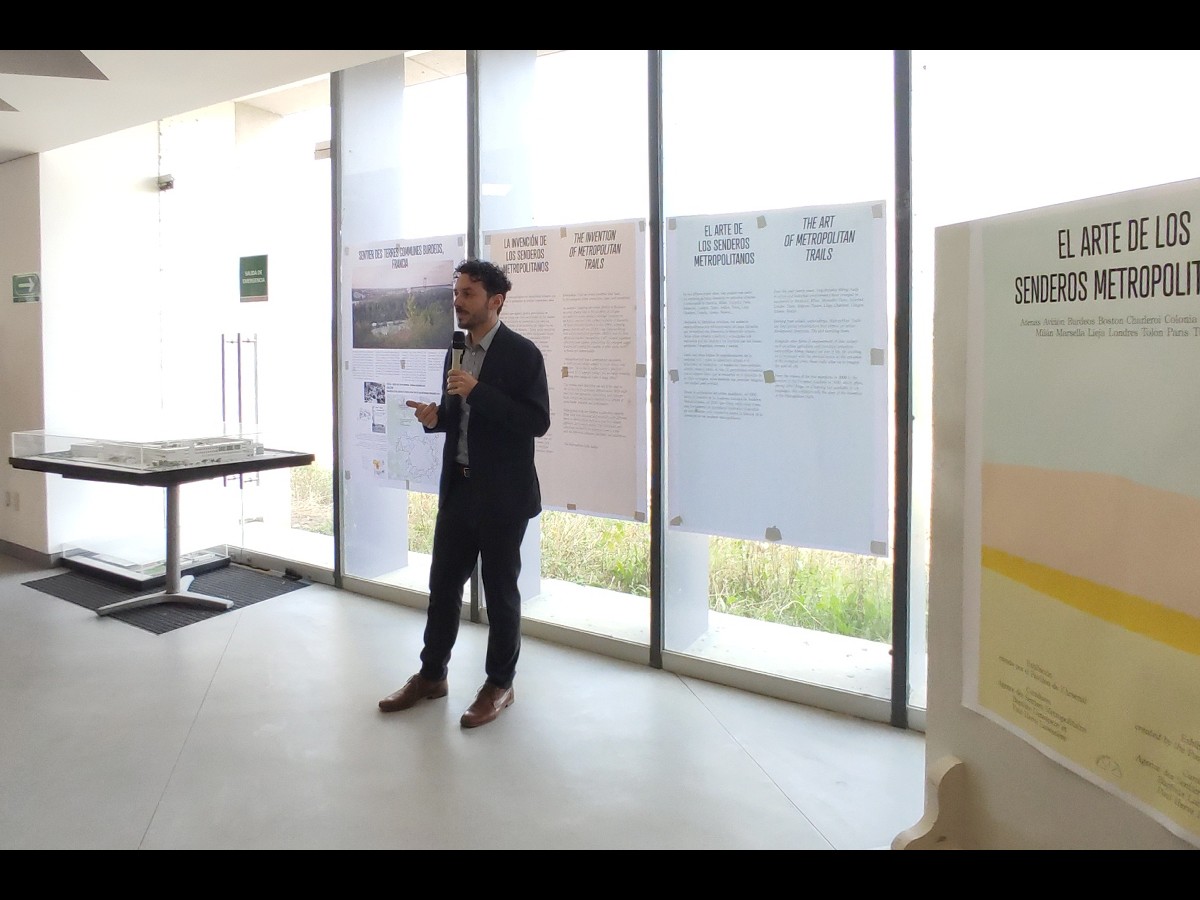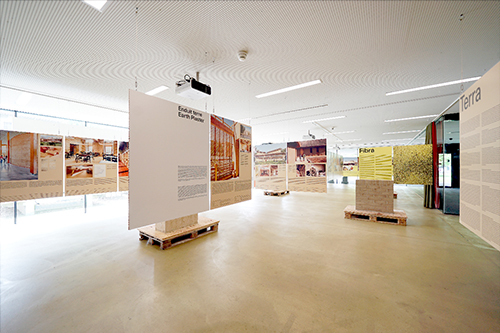The exhibition "The Art of the Metropolitan Trails" is presented from November 22, 2022 at Campus Lerma, Mexico City.
From Bordeaux to Boston, Istanbul, Milan, Marseille, and beyond, metropolitan trails have generated a new creative space that lies at the crossroads of urban planning, art, tourism, and environmentalism. Mixing the urban with the cultural, these projects involve many aspects, ranging from the initial, collective attempts to develop them (scouting, city walks, and metropolitan hiking) to documenting them (through art projects, books, articles, travel journals, audiobooks, documentary films, and exhibitions), ultimately resulting in a collective itinerary created in conjunction with local authorities.
The exhibition “The art of metropolitan trails” describes this emerging practice, renders homage to its pioneers, explains how a metropolitan trail is created, and also, for the first time ever, unveils the outline of the Grand Paris Trail.
This trail is the first metropolitan cultural facility to cover all of Grand Paris. At 600 km in length, it can be walked in 30 days. Designed by artists, architects, urban planners, and philosophers, it provides inhabitants and walkers with an experience extending from the near to the far suburbs of Paris. For its creators, metropolitan hiking represents a social movement like urban agriculture and temporary use that changes how we inhabit and perceive our surrounding territory. "By connecting us to the physical space at the very epicenter of our current environmental crisis, these trails help us envision the post-oil city".
This trail is the first metropolitan cultural facility to cover all of Grand Paris. At 600 km in length, it can be walked in 30 days. Designed by artists, architects, urban planners, and philosophers, it provides inhabitants and walkers with an experience extending from the near to the far suburbs of Paris. For its creators, metropolitan hiking represents a social movement like urban agriculture and temporary use that changes how we inhabit and perceive our surrounding territory. "By connecting us to the physical space at the very epicenter of our current environmental crisis, these trails help us envision the post-oil city".





